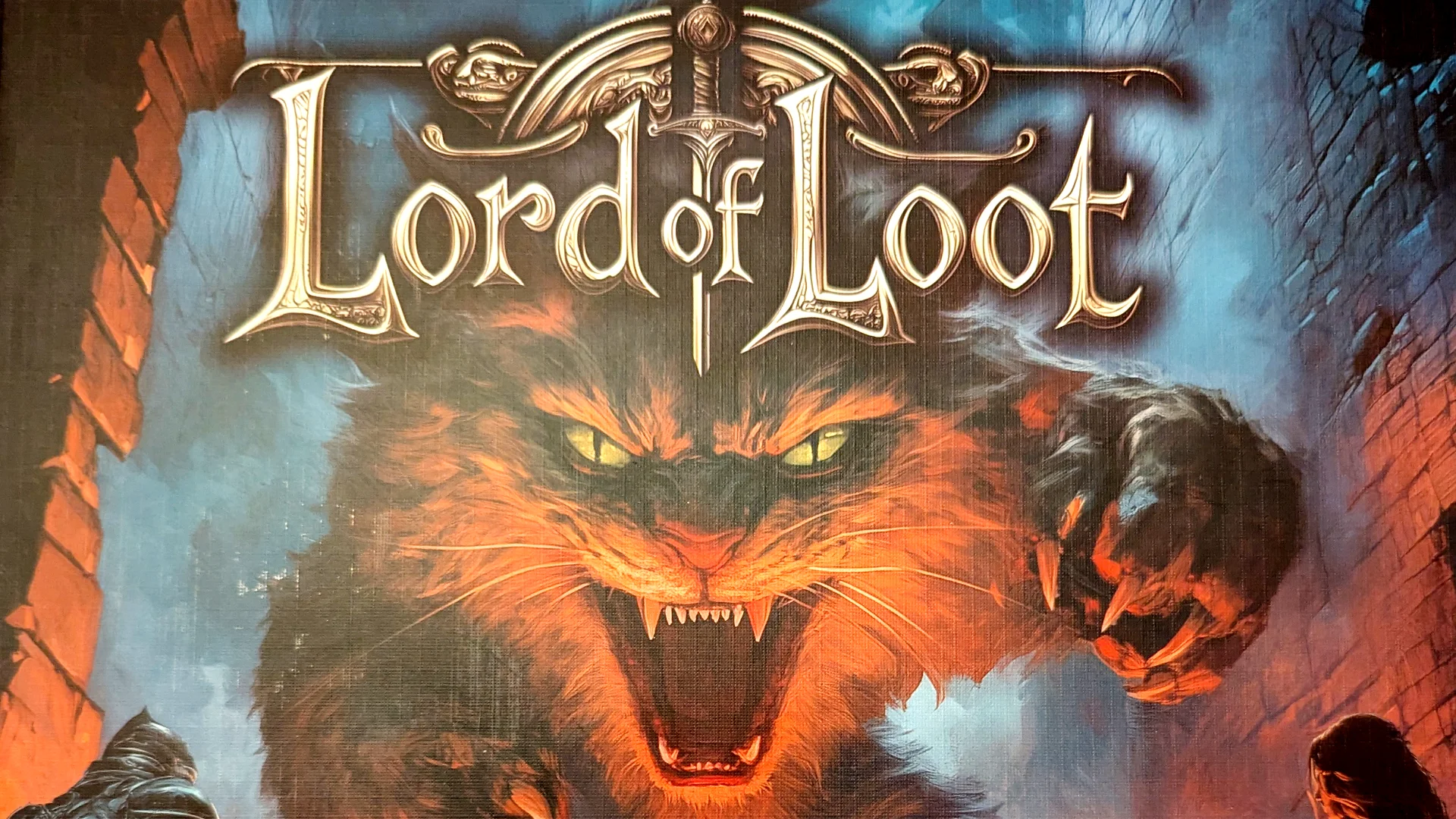Anyone who’s played games like Dungeon! or DungeonQuest knows the joyful simplicity of throwing dice, finding treasure, leveling up, and wrapping up an easy-going adventure against goblins, vampires, pudding, and dragons. Lord of Loot harkens back to these old fantasy tabletop games that likely borrowed ideas from first edition Dungeons & Dragons. Since retro’s hip in the video game sphere, why not with tabletops?
Though, we gotta ask ourselves: have we moved on from this formula for a reason? Sure, probably. Now, we have intensely complex board games like Mage Knight and Frosthaven to occupy hundreds or even thousands of hours of our time—willingly, I might add—so one would assume that these bones-throwing jaunts are relics that belong in a museum. For the “serious board gamers” out there, this is an easy pass, but if you’re nostalgic for simpler days of mighty warriors named Floyd and anthropomorphic trees—and if you have kids—then Lord of Loot will scratch that itch admirably.
Why are we even doing this, though? Lord of Loot takes place in a mystical realm that has known a long peace. So long, in fact, that knights have grown fat in comfort. Fat and incompetent. Wouldn’t you know it, the monster portals are kicking ne’er-do-wells back out and causing havoc. You, brave adventurer, must pick up a sword, sling spells, and defeat the—Petnapper?
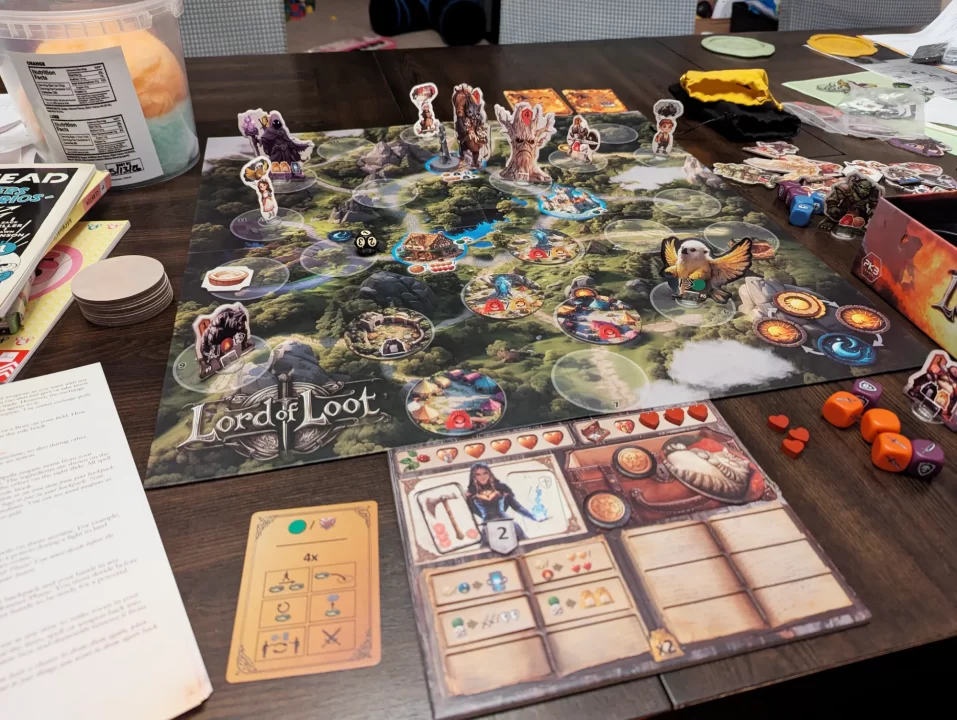
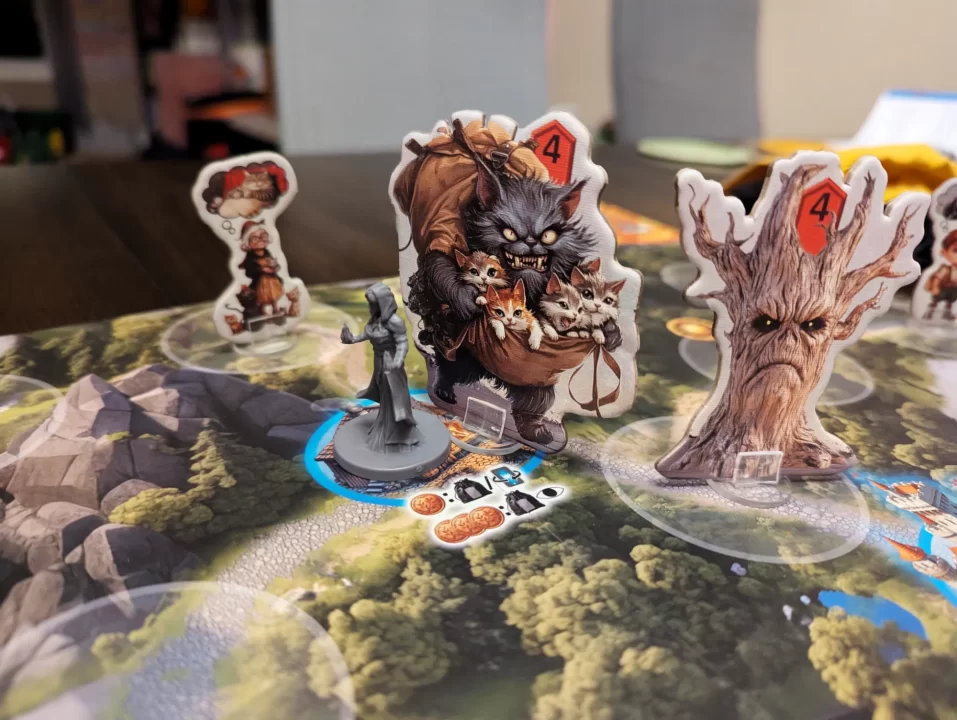
Lord of Loot is cute, especially with its bosses, who each have a little blurb about what their deal is. Story quips aside, the visuals pop off the cardboard standees with cute skeletons, scary vampires, and a wholesome, sleeping, rotund kitty. In the prototype we received, the production quality is your standard fare, which is fine, but the artwork adds a little kick that makes Lord of Loot pleasing to see on the table.
We didn’t have too much issue with the components, aside from a cardboard mat that frayed a bit on the side, but, again, prototype. The dice are fairly basic with swords and shields represented in equal measure, cardboard chits in thin cloth baggies that are far too small to satisfyingly mix up (or stick your hand in if you’re a bigger friend), and plastic figurines that beg to be painted.
The rulebook, while clear for the most part, left us with a few questions. Yet, anyone who’s ever played a modern board game will tell you that’s too few to mention. As simple as Lord of Loot is, the rulebook is visually intense in terms of size, but reads quickly and uses illustrations tactfully to get players going effectively. One of my favorite furnishings in any board game is an easy-to-read helper card, which Lord of Loot thankfully has, though the rules are so accessible that you won’t need it after a couple games.
Now, how does this sucker play? I may have tipped my hand earlier, but, at its heart, Lord of Loot is about finding goodies out in the world, beating bigger baddies so you can level up, and eventually satisfying small quests to earn the right to punch the two bosses in the nose. Out of the gate, players can spider off in a few different directions to explore a circular, vacant location. Flip that token over and discover a bag symbol to pull a goody: spell, weapon, shield, or miscellaneous resource or food. Move, explore, or gather items in any combination of four action points, and then the monsters get their turn.
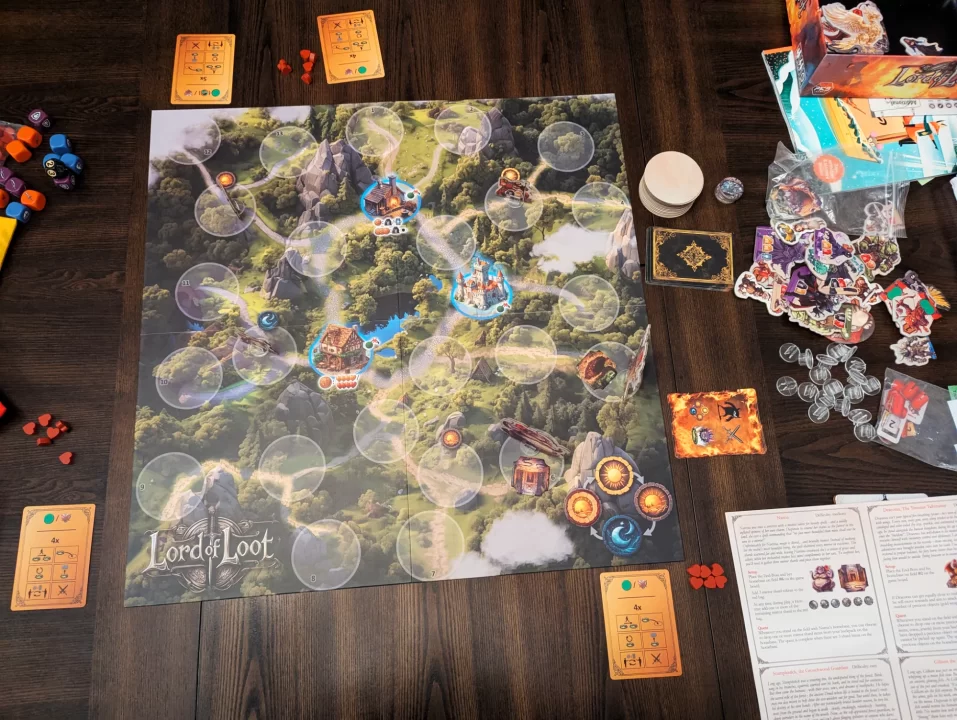
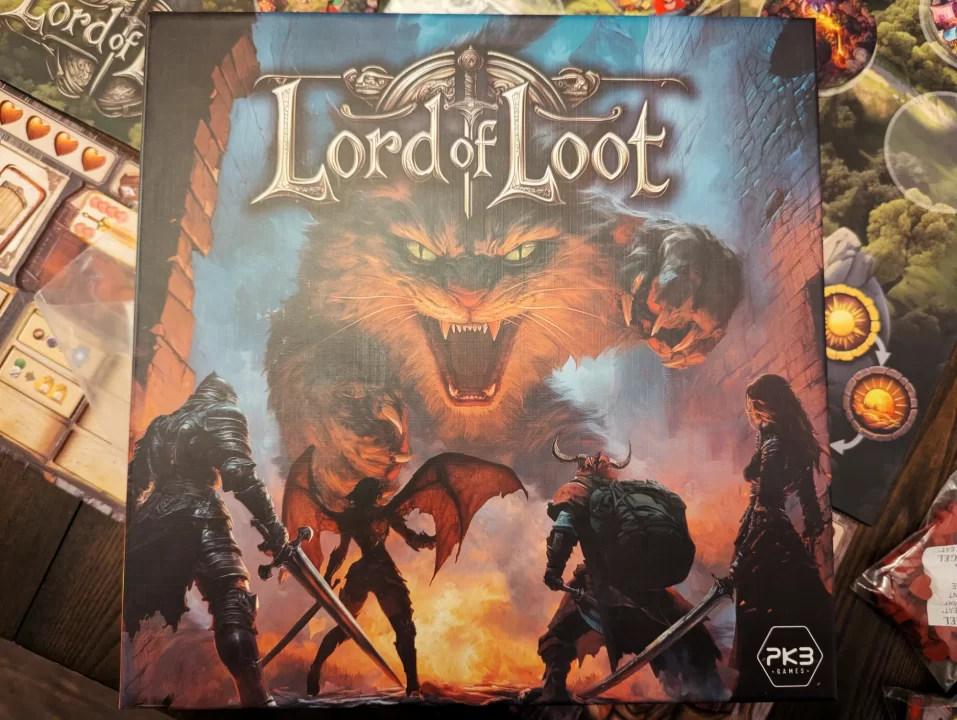
Monster turns flow intuitively with only six or so symbols possibly represented after flipping a card over. Bosses or their ilk move and attack, daytime shifts to change monster spawning locations, monsters may spawn, and enemies may drop loot while moving around. Lovely. After this automated haunt towards our players, the next player goes. Continue this pattern as the core system of play.
So, you find a basic wooden weapon or shield and want to take a stab at an enemy. Great! Each enemy drops different loot, whether that be sword, shield, random object, or spell. Beating a level one enemy won’t do much beyond that, but if you beat a level two (or three) critter, you get to level up. Leveling up is fantastic because you can equip higher-level gear instead of having it sit in your bag.
I enjoy the inventory system because it involves fitting cardboard pieces into your cardboard player mat. This may seem puzzly at first, but the chits fit in a pretty rudimentary fashion in the player board. Still, it’s a fun way to manage inventory rather than relying on an abstract number in an empty space like so many other games do. If the bag fills up, you may need to pitch items unless you forgo the reward.
Spells come in a wide variety, with some assisting in battle, others producing resources, and a couple helping with mobility. Each spell comes with a cost, but no action point requirement. The costs are those miscellaneous objects I referenced earlier, typically wood, food, bones, fire, gold, and so on. Interestingly, you can use equipment for its resource type. So, wood, metal, and gold gear can be synthesized into the needed resource.
Finally, bosses are invincible—and there are always two—until you satisfy their quests. This can be returning pets to their owners, dropping mirrors on the boss’s home base, or making sure you have no wooden equipment or resources before you can hit the gargantuan tree. Bosses throw several dice, so whether or not you satisfy the quest early, you probably want to level up to three and get some premium gear.
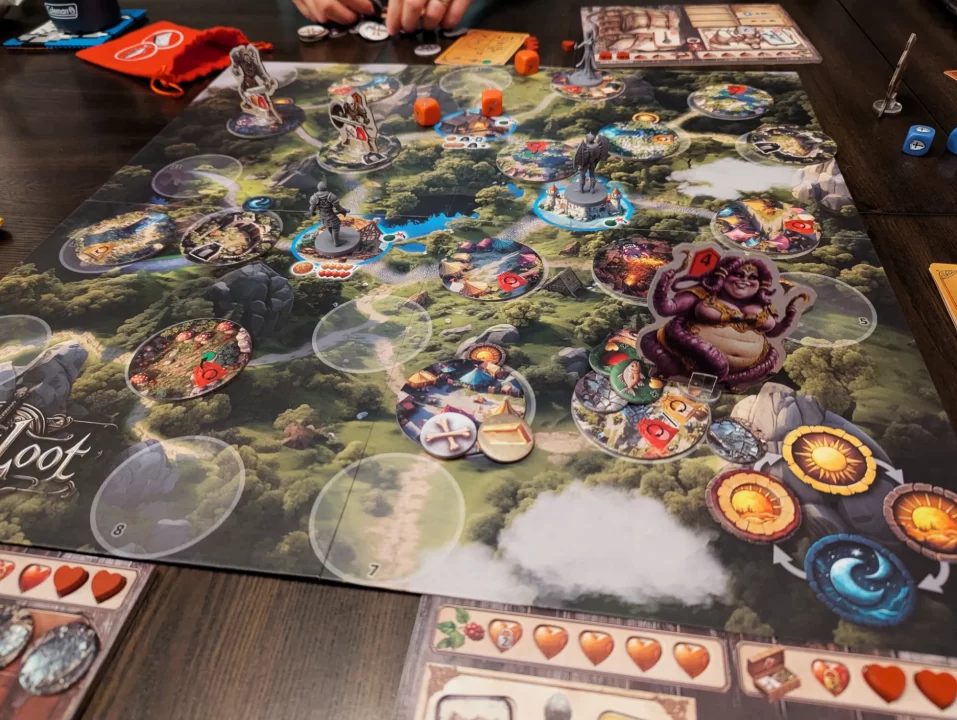
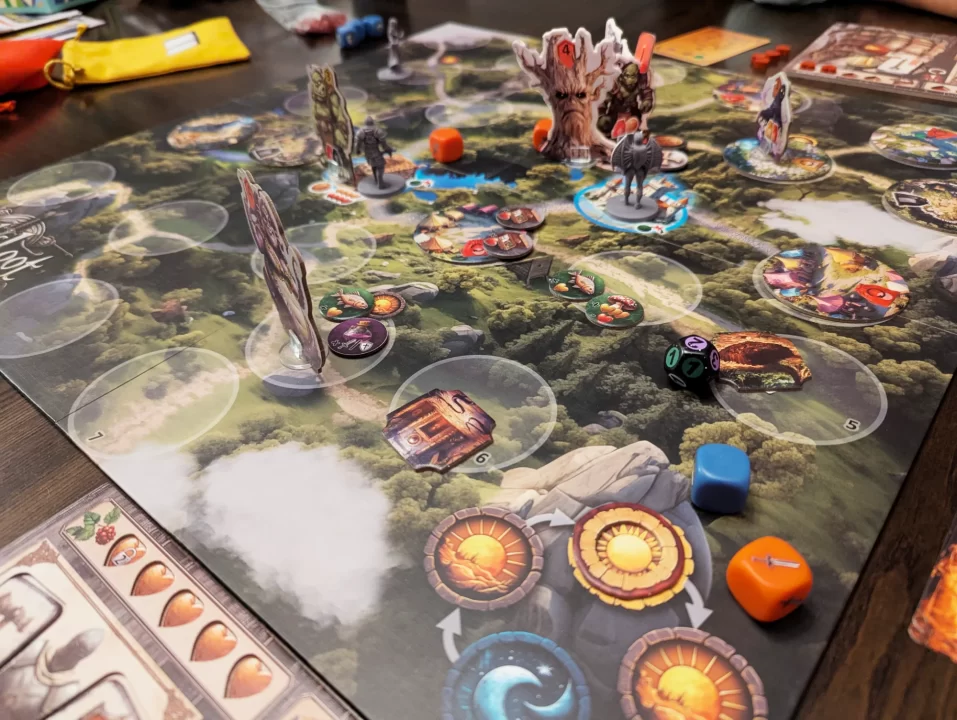
That’s the essential breakdown of Lord of Loot. So, how does it all come together? While by no means a perfect game, this is a great introductory excursion for families or kids. Heavy reliance on dice can make lows feel deeply unsatisfying, while a surprise throw can be a jubilant occasion. My daughter loves it. The board has enough randomness to make tile pulls a bit exciting, but not enough variety to truly elate. Generally, the game flows mostly the same way each run, with the gathering phase, leveling up phase, quest phase, and finally boss phase.
How each of those phases plays out is where the strategy comes in. A nasty monster spawn can make accessing a particular part of the board intimidating, but you may really want to visit the blacksmith tile to ensure gear improvement. This is the risk-reward we are all so familiar with, and can make cooperative communication pivotal. If one player has all the good gear, they may want to draw enemy aggression and allow the weaker player to satisfy the quests. In this way, Lord of Loot has more teeth than a board covered in cute artwork and dice may lead you to believe.
For a simple game like this, the average 90-minute playtime can feel daunting, which is why it’s probably best played in small spurts. Want to get your eight-year-old into board gaming? This is a good game to bust out as a reward on a Friday night. Enough to contemplate, but low stakes enough to make losing palatable. If this sounds like the kind of game you want to support, please head over to the creator’s Kickstarter and consider sharing your loot with him.
This article is based on a free copy of the board game provided to RPGFan by the publisher. This relationship in no way influenced the author’s opinion, and no compensation was provided in relation to coverage. Learn more on our ethics & policies page.

